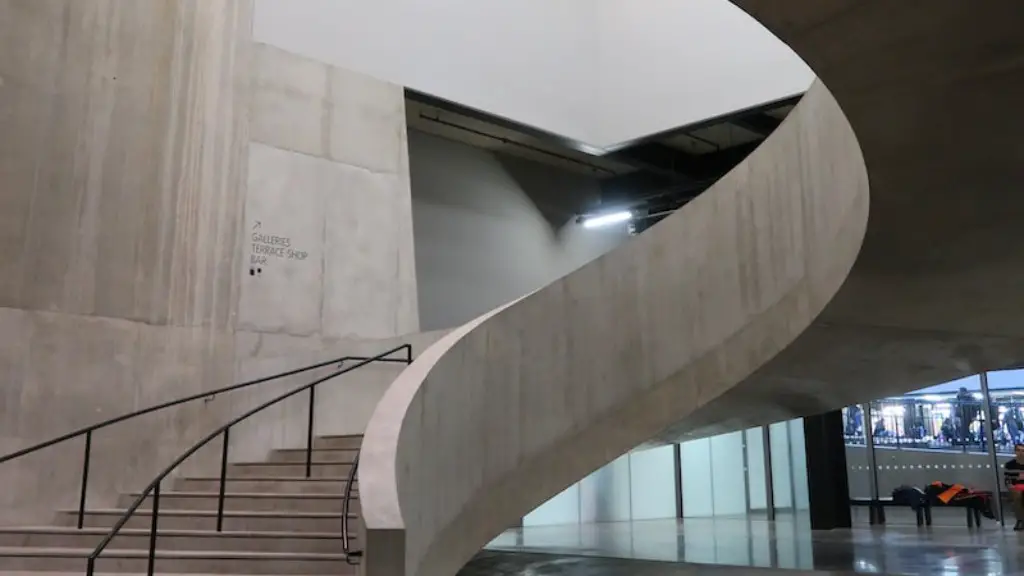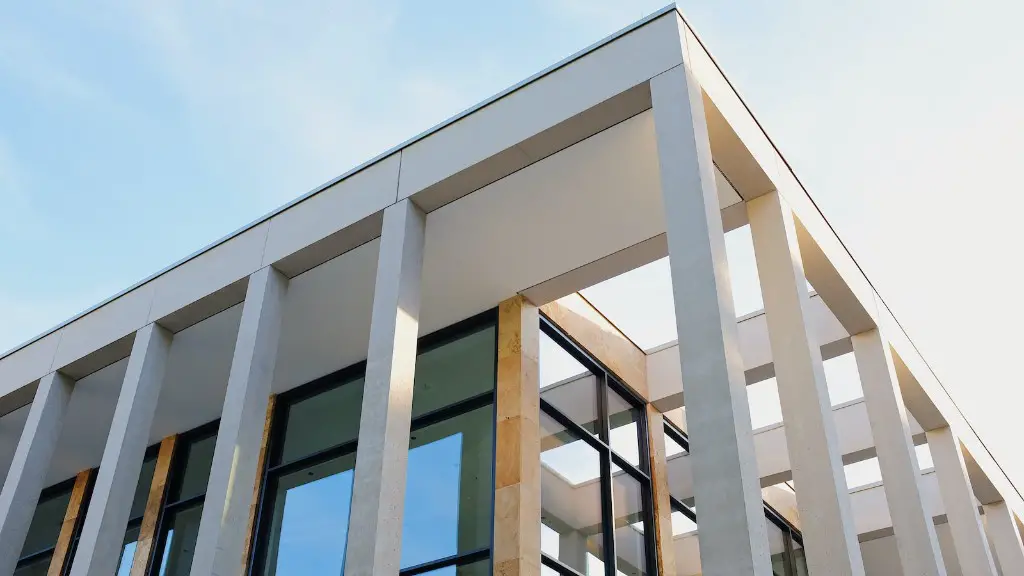Design Mental and Physical Benefits of Architecture
Architecture offers a unique combination of mental and physical benefits, from stimulating creative thought processes to providing a creative outlet for self-expression. From a hobbyist who gives life to their thoughts to another individual engaged in a professional career, architecture engages the mind in many fascinating ways. It also requires physical-labor, as it is necessary to put together materials, plan designs, and appoint contractors to actualize the project in the building phase.
When reflecting on why to choose architecture, one should consider the individual reasons as well as the societal benefits derived from the profession. On the individual level, architecture ordinarily requires formal education to excel in the field. Through formal education, an individual is exposed to a foundation of arts, sciences, and technologies with which they can expand upon and develop skills that can be applied to the individual’s life and profession.
At a societal level, a strong argument for why one should choose architecture is the lasting impact it can have on a number of people from the most macro — cities and civilizations — to the most micro — communities and individuals. In cities, architecture is a major factor in the formation and sustainability of a city for years to come. On a smaller scale, architecture can alter the lives of its inhabitants through benevolent design solutions to everyday challenges faced by people in their environment.
One of the best aspects of the architecture profession is its blend of creativity and practicality. While its creative factor allows for individual expression, the practicality of architecture lies in the fact that it usually requires careful planning, engineering, and foresight. This combination of creativity and practicality allows the individual to make their vision come alive while being mindful of how it will work in real life.
Impact of Architecture on Health and Well-Being
The impact of architecture on human health and well-being is paramount, and it is important to understand that the design of our surroundings can affect us in many positive ways. Studies have shown that the quality of lighting, ventilation, acoustics, materials, and environmental sustainability of our built environment can have a direct relationship with how healthy one can feel.
For instance, an open plan room can assist in reducing stress, increase productivity, and improve socialization. In addition, incorporating natural materials into an environment such as wood, stone and plants can reduce noise, provide insulation, and create a pleasant and natural-looking ambiance.
It is also vital to consider the safety of those inhabiting the environment. The layout of a built space should be easy to navigate, providing people with easy access to exits and other key areas in the event of an emergency. Furthermore, considering health standards is necessary, and advance planning for ventilation systems, water and waste disposal are key components to a successful architecture project.
Economic Benefits of Architecture
The economic benefits of architecture should not be underestimated. This profession can provide valuable employment opportunities to many individuals. Studies conducted around the world show that architecture can be both a stimulating and rewarding profession, one in which individuals can truly excel.
Outstanding architecture projects can bring mass fascination to given areas, and thereby foster economic growth through the attraction of more citizens to those areas. Furthermore, the practice of architecture establishes strong working relationships with other professionals, providing job opportunities with numerous businesses and entities.
Individuals of a certain level of education can apply for visas to further their careers and take part in a variety of cultural exchanges. The potential for such individuals to travel, entry different geography, and understand novel cultural norms is vast. As such, architecture serves as an influential factor in the transportation of culture to different parts of the world.
Purchasing Power of Architecture
Another integral factor in understanding why one should choose architecture is the purchasing power that comes with the profession. Architects are the decision-makers when it comes to design and construction, and a successful architecture career provides the opportunity to contribute to countless cost-saving decisions.
Productive architectures can be seen on the balance sheet, even after the architect has left the building site. Cost-saving decisions are made in the design process, whereby an architecture can be more efficient in making use of energy sources, labor, and local resources, as well as in maximizing the use of space for the given purpose.
In addition, architects have the ability to ensure a long-term profitability for companies and projects. Emerging technologies and building industries have contributed to the overall increased purchasing power of the architect.
Leadership Opportunities for Architects
Ultimately, an individual who chooses to pursue an architecture career can gain a variety of leadership opportunities. The profession is often considered a mixture of art and science, providing one with the opportunity to express their artistry while having the analytical skills to conduct the mission-critical tasks associated with the profession.
As mentioned before, architects are the decision-makers when it comes to the design and construction of a space. For example, a successful architect can work to develop and implement relevant trends in the industry while keeping a strong sense of what constitutes “beautiful” design. In this way, they are guiding the overall conversation within the field of architecture, and take up leadership roles.
Additionally, architects can also actively pursue advocacy opportunities within their community by leading or participating in a taskforce for the city’s local planning and building departments, leveraging the skill set to meet long-term goals.
Adaptability as an Architect
Architecture is a profession which inherently requires adaptability on the part of the architect. Each project poses novel challenges, for which one must be willing and able to adjust to and work with different elements.
In accommodating for the fluxuation in project parameters, architects must factor in the economic, environmental, and political climates that the project is taking place in, taking due cognizance of how it will shape the decision-making process. This necessitates actively engaging with other professionals to ensure the project is adapted to the given environment.
This factor of adaptability is crucial to the profession and necessitates forward-thinking leadership skills. Successful architects must be able to foresee potential ramifications of their designs and take timely action with regards to budget considerations and regulatory compliance.
Building Relationships with Clients
The success of any architecture project relies heavily on the relationship between the clients and the architect. As such, architects must learn to assess the needs of the clients, leverage their creative capabilities and adhere to a rigorous timeline, all the while accommodating for any changes or updates from the client’s side.
A successful architect must also be able to keep their clients in the loop throughout the project, be clear in their communication, and ensure that their clients are satisfied with their designs. This also presents an opportunity for architects to build relationships with clients, furthering their professional and personal goals in the process.
Architecture in Urban Design and Development
Architecture has a significant impact on the functional and aesthetic quality of a human environment. By taking into consideration the opinions of stakeholders, the respective local demographics, and any prior technical knowledge, an architect can accurately forecast the effects of their design in the built environment.
The urban design and development of a built environment should reflect architectural plans that can serve a wide range of purposes, including commercial, residential, educational and entertainment. Architectural designs should consider perspectives of public safety, governance and environmental conservation, without causing economic turmoil to the stakeholders, and at the same time, keeping all public spaces safe, secure and accommodating.
Moreover, architects should strive to build properties that can cope with the ever-changing trends that come with population growth, urbanization, and globalization. Designs should be avant-garde enough to withstand current trends, but with a classic outlook that can keep their relevance in the later years.
Sustainable Architecture and Green Building
Today, environment-friendly designs have become imperative to ensure our built environment does not inflict additional stress on the ecological system. As such, sustainability and green building should be at the forefront of architecture as a concept.
Documents such as the LEED Certification scheme by the U.S. Green Building Council, which provides guidelines to create a more sustainable and cost-efficient built environment, should be adopted by architects to align their approaches with set standards.
In doing so, the overall energy use and carbon dioxide emission rate of a building can be lowered, conserving resources in the process; water conservation and waste management are two primary areas of impact. Moreover, the well-being of future generations should also be taken into account when deciding on a building’s designs.
Community Focused Architecture
Finally, architecture should encompass a communal approach, from student housing developments to healthcare facilities. While adhering to the respective municipal regulations, architects should prioritize social interaction and communal living as integral factors in a development’s success.
In particular, designs should ensure that the built environment caters to elderly occupants, the disabled, and children, given their incapacity to efficiently navigate their projects. In this way, cities will be able to build environments that bring people together, rather than divide them.
The need of the hour is for architects to focus on designing buildings with the educational, recreational, and well-being of occupants in the foreground. Through equipping occupants with skills and resources in their immediate environment, communal living is further encouraged, ultimately creating a closer-knit society.


